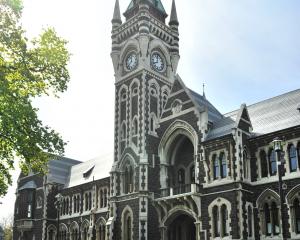The Reserve Bank has raised the Official Cash Rate by 25 basis points - taking it to 5.5 per cent - and surprising markets by signalling it's done enough.
New Zealand's central bank still sees 5.5 per cent as the peak for benchmark index and anticipates cuts from the third quarter of 2024.
The big turn in immigration numbers and last week’s Budget had shifted market forecasts drastically since the last OCR decision in April this year.
Where previously, a rate hike to 5.5 per cent this month was expected to be the peak for the cycle, there were growing expectations the rate would move as high as 6 per cent.
Reserve Bank governor Adrian Orr said told media this afternoon the OCR would need to remain at a restrictive level for the foreseeable future.
International supply chains had eased and inflation was expected to continue to decline from its peak, however, core pressures did remain, he said.
There were now signs of labour shortages easing and vacancies declining, and house prices had returned to more sustainable levels, Orr said. Businesses were reporting slower demand for their services, and the main constraint was now lack of demand rather than labour shortages.
Immigration had assisted with that, he added.
In addition, the rebuild due to severe weather events would also support economic activity and broader government spending was expected to decline, Orr said.
Markets surprised
The Reserve Bank’s decision on Wednesday to hike the rate by 25 basis points, while largely in line with expectations, unleashed a “crazy” response in the nation’s dealing rooms, as it was far more dovish than expected.
The big surprise was that the central bank had called the peak in the OCR at 5.5 per cent.
”It’s crazy, as you would expect,” Westpac senior market strategist Imre Speizer said today.
”It’s a very dovish surprise in the OCR track. The 25 basis point hike was not a surprise – that was fine. It was the retention of the 5.5 per cent forecast peak.
”In other words, they are signalling that they have completed the cycle. It’s over. And that was a major surprise for the market as most had expected more rate hikes to come.”
ASB chief economist Nick Tuffley said the statement and decision were a bit of a surprise.
"We expect that the RBNZ is now firmly on hold now at 5.5 percent, providing data keep showing that inflation pressures are easing."
By mid-afternoon, the New Zealand dollar was down at US61.85c from US62.48c just before the announcement at 2pm.
In the interest rate markets, the response was huge. The two year swap rate fell sharply to 5.19 per cent from 5.55 per cent while 10 year swap rate was at 4.37 per cent from 4.53.
In bonds, two-year Government yields fell to 4.79 per cent from 5.13 per cent and 10 year bonds were at 4.30 per cent from 4.45 per cent.
That should all add up to downward pressure on fixed rates - good news for mortgage holders.
Following today's announcement, ASB was the first major bank to lift its interest rates. Its Housing Variable rate will move from 8.39 per cent to 8.64 per cent, while the ORBIT home loan rate will move from 8.49 per cent to 8.74 per cent.

"The committee agreed the level of interest rates are constraining spending and inflation pressure."
The RBNZ said inflation was easing from its peak. “Consumer spending growth had eased and residential construction activity had declined.”
And house prices had returned to more sustainable levels.
“More generally, businesses are reporting slower demand for their goods and services, and weak investment intentions. Businesses report that a lack of demand, rather than labour shortages, is now the main constraint on activity.”
Prior to today’s decision, there were growing expectations that the rate could move as high as 6 per cent.
“Members discussed the impact of Budget 2023. Fiscal policy is projected to add to demand over the 2023/24 fiscal year, then dampen demand in subsequent years,” RBNZ said.
“Overall, fiscal policy will be contractionary on demand over the projection horizon. This reflects that government consumption, which is the larger share of government spending, is expected to fall as a share of GDP in coming years.
"Government investment is expected to continue to grow, in part due to the repair and rebuild work in the aftermath of the weather events. Fiscal policy is projected to be less contractionary than the Committee had assumed in February.”
The Monetary Policy Committee also discussed the impact of the recent surge in immigration.
“The Committee expects the pace of immigration to ease back toward pre-Covid-19 trend levels over coming quarters,” the RBNZ said.
“While immigration has assisted to ease labour shortages, its net impact on overall spending is uncertain. The recent recovery in tourism spending, to around three-quarters of its pre-Covid-19 trend level, is also supporting demand.”
- additional reporting RNZ













